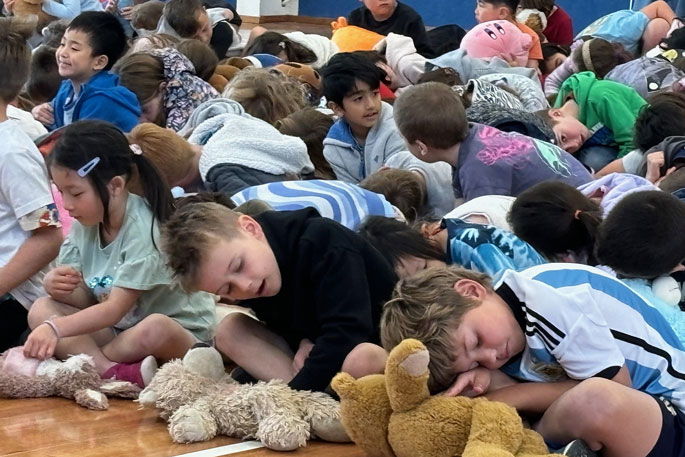Hato Hone St John is encouraging young students to learn basic CPR skills at school by getting hands-on practice with their favourite teddy bear as part of World Restart a Heart Day and Shocktober.
‘Save Your Teddy’ sessions will be held at schools around New Zealand on October 16 which marks World Restart a Heart Day and also falls in the middle of Shocktober, HHStJ’s CPR annual awareness month.
The in-school sessions are run by HHStJ educators and for the first time tamariki are encouraged to bring their teddy bears to school to practice life-saving skills as they are taught what to do if someone suffers a cardiac arrest.
“This is the first time Hato Hone St John has held in-school sessions with students and their teddy’s highlighting what students can do in the event someone suffers a cardiac arrest. We are delighted that 62 schools around the country have registered to participate in our inaugural Save Your Teddy sessions,” said Jacci Tatnell, HHStJ National Manager – Community Education.
Hato Hone St John wants everyone to have the confidence to know the steps that can dramatically increase a person’s chance of surviving a cardiac arrest.
“It’s about instilling the steps that need to be taken from an early age. We encourage parents and caregivers to have conversations with their children. Building awareness with children on the actions to take in the event of a cardiac arrest may save a life through practice and sharing their learnings with their families.
“We have so many examples of children in our ‘Super Saver’ programme who have helped in a medical emergency. Emergencies can happen anytime, anywhere and being prepared and knowledgeable about what to do, no matter what your age, can be key to a positive outcome. It only takes two hands to save a life!” said Jacci.
The Statistics:
-
Seven people a day are treated for an out-of-hospital cardiac arrest in New Zealand (more than 2,000 per year) 32% Female. 68% Male.
-
Seventy six percent of patients receive bystander CPR.
-
Six percent receive defibrillation by a Community Responder prior to ambulance arrival.
-
Twenty three percent of patients survive the event (have a pulse on arrival at hospital).
-
Eleven percent of patients survive.
-
New Zealand has more than 12,800 people registered as GoodSAM* responders
-
AED numbers in the community are growing, with more than 13,660 registered throughout the country. That number has been bolstered at marae across New Zealand with gifts of AEDs into vulnerable communities thanks to ASB, with the support of Phillips and Hato Hone St John. In addition, all ASB branches have AEDs.
-
Find more information in the Out of Hospital Cardiac Arrest report here https://pardot.stjohn.org.nz/l/182252/2024-02-12/6zzq8f/182252/1707782781t6hTGAZM/2022_2023_All_of_New_Zealand_OHCA_Report.pdf
How adults can help:
-
Visit the *GoodSAM website GoodSAM - Medical (goodsamapp.org) to register as a responder or download the App GoodSAM Responder on the App Store (apple.com) from the App store. The GoodSAM network of trained volunteers - including doctors, nurses, paramedics and registered first aiders - give life support to people in cardiac arrest while help is on the way. GoodSAM is a free app that alerts trained volunteers that a person nearby could be in cardiac arrest, allowing them to provide basic life support and first aid prior to emergency services arriving.
-
Download the CPR App Lifesaving apps | Hato Hone St John. This give you instructions on how to perform CPR and use an AED (including videos), a timer to help with steady chest compressions and is available.
-
Download the AED app AED Locations to find the closest AED in your area.
-
Visit 3 Steps for Life - CPR Community Training session dates https://3stepsforlife.stjohn.org.nz/locations



0 comments
Leave a Comment
You must be logged in to make a comment.